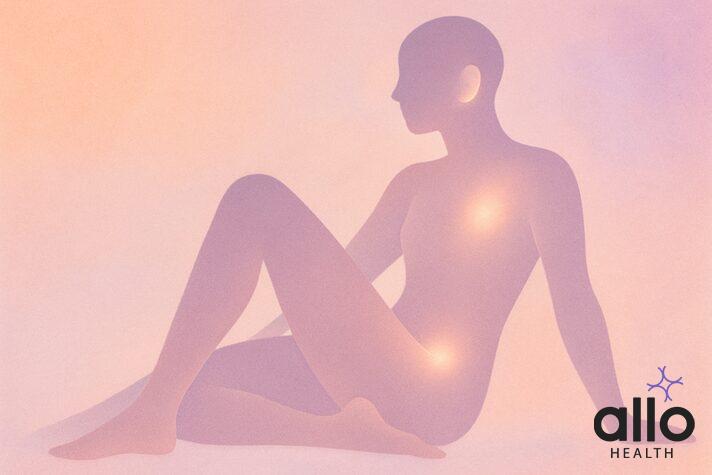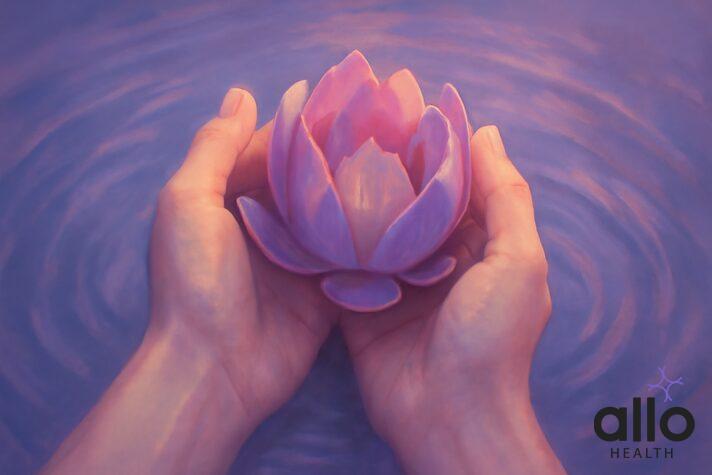Types of Masturbation: Exploring What Feels Good for You

"The following blog article provides general information and insights on various topics. However, it is important to note that the information presented is not intended as professional advice in any specific field or area. The content of this blog is for general educational and informational purposes only.
Book consultation
The content should not be interpreted as endorsement, recommendation, or guarantee of any product, service, or information mentioned. Readers are solely responsible for the decisions and actions they take based on the information provided in this blog. It is essential to exercise individual judgment, critical thinking, and personal responsibility when applying or implementing any information or suggestions discussed in the blog."
Masturbation is one of the most natural and safe ways to connect with your body. It can help you discover what feels good, understand your desires more clearly,[1] and even relieve stress after a long day.[2] Even though it’s often surrounded by silence or awkwardness, solo pleasure is something most people experience in their own way.[3] Just like everyone enjoys their favorite dessert a little differently, masturbation isn’t one-size-fits-all either.
In this article, we’ll explore the different ways people masturbate—based on how they do it, why they do it, what they use, and what parts of the body they touch. Whether you’re new to self-pleasure, looking to try something different to just want to understand yourself better, or just curious about how others approach it, you’re in the right place.
Why Talk About Different Types of Masturbation?
Talking openly about solo pleasure helps break the shame around something completely natural. It can boost confidence and help us feel more connected to our own bodies.[4]
Some people also find that trying new techniques helps with things like low desire, performance anxiety, or even difficulty reaching orgasm.[5]
And for couples, understanding what feels good individually can lead to better communication, deeper intimacy, and more satisfying sexual experiences.[6]

Body Parts That Can Feel Good While Masturbating
Masturbation isn’t just about the genitals—many people discover that other parts of the body can feel really good too. Exploring different areas helps you learn what turns you on and what brings you comfort or pleasure.
- Nipples:
Nipple play can turn up the heat for people of all genders. Whether it’s a gentle touch, a little pinch, or a playful lick—these tiny spots can be super sensitive and add a lot to the experience![7] - Anal Area:
With proper hygiene, lube, and care, some people explore touching around or inside the anus. It’s packed with nerve endings and can feel pleasurable when done gently and safely.[8] - Perineum:
Located between the genitals and anus, the perineum is often included in massage or gentle pressure play. For those with a prostate, this spot is especially sensitive.[9] - Inner Thighs, Neck, Ears and, Lower Back:
These areas respond well to light touch, warm breath, or kissing. They can build up arousal and are worth exploring, even during solo play.[10] [11] - Prostate (for people with penises):
The prostate is a gland located a little inside the anus, often described as the “male G-spot”. Stimulating it can lead to intense pleasure for some.[12]
Every body is unique, and part of the joy of masturbation is learning where your own sensitive spots are.
There’s no one ‘normal’ way to masturbate—everybody is different. It’s completely natural, and exploring what feels good to you is a healthy, important part of getting to know your body.
Common Techniques of Masturbation
Manual Masturbation
This is the most common way people masturbate—just using your hands. People often use their fingers or palm to touch or rub their genitals in different ways. A bit of oil or lube can really level up the comfort and pleasure.[13]
Pressure-Based Masturbation
Instead of moving your hand up and down, some people enjoy applying steady pressure. This is especially common among people with vulvas, who may enjoy squeezing their thighs together, pressing a pillow against their body, or gently grinding.[14]
It’s less about movement and more about creating a comforting, steady feeling.
Edging (Tease and Denial)
Edging means bringing yourself close to orgasm, then stopping just before climax. This back-and-forth technique helps build arousal and can lead to a much more intense orgasm when you finally let go.
Some people use this technique to increase control, especially if they usually climax quickly.[15]
Using Toys or Vibrators
Some people use toys to add more variety or stimulation. For example, vibrators create gentle buzzing sensations that feel great on sensitive areas. People with penises might use soft sleeves for stroking, while those with vulvas might enjoy dildos or external vibrators.[16]
Toys are especially helpful for those with limited hand movement or who find it hard to climax. They’re also a fun way to explore safely.
Mental or Fantasy-Based Masturbation
Not all masturbation involves touch. Some people enjoy imagining a sexy scenario, reading erotic stories, or watching something that turns them on. Sometimes, just lying down and focusing on your breath while visualizing can be enough to feel pleasure.[17]

Why Do People Masturbate?
For Stress Relief
Masturbation isn’t always about orgasms. Sometimes, it’s just a way to relax your mind, fall asleep easier, or release built-up tension. It can feel really soothing and even lift your mood.[18]
Goal-Oriented Masturbation
Sometimes, people masturbate just to reach orgasm quickly. This kind of solo play is more focused and usually shorter. It’s totally normal and can be a great way to release sexual energy.[19]
For Exploration or Therapy
If you’re not sure what feels good to you, or if you’ve had trouble reaching orgasm (a condition called anorgasmia)[20] [21] or feel very delayed in climaxing (delayed ejaculation), mindful masturbation can help.[22] Taking time to explore what feels nice—without pressure—is often part of therapy for these conditions. Some people find using vibrators or focusing on specific areas like the perineum or prostate (in people with penises) makes a big difference.
How Masturbation Can Differ by Body Type?
For People with Penises
Most people with penises use stroking, where the hand moves up and down along the shaft. Some like playing with the head (tip), massaging the testicles,[15] or gently pressing on the perineum. A few explore the prostate, which can feel very pleasurable when done safely.
For People with Vulvas
Simply put, the vulva is the part of the female genitals that’s on the outside of the body. It includes areas like the clitoris, which is a small, sensitive organ located above the vaginal opening. Masturbation might include gently rubbing or tapping the clitoris,[23] inserting fingers or toys into the vagina, or pressing around the G-spot, which is believed to be a sensitive area inside the front wall of the vagina.[7]
Some enjoy combining external and internal touch,[24] while others may find pressure or warm vibrations more enjoyable. Everyone’s preferences are different—what matters is what feels right for you.

Masturbating Alone or With a Partner
Masturbation doesn’t always have to be solo. Some couples enjoy masturbating in front of each other or even touching themselves while their partner watches or joins in. It can be a safe, intimate way to connect, especially when you’re still learning about each other’s likes and dislikes.[25]
Solo time, on the other hand, is all about you. It’s your space to explore, unwind, and enjoy your body on your own terms.
Is There a Right Way to Masturbate?
Nope. There’s no “correct” way to masturbate. Some people enjoy it daily, others only sometimes—and some not at all, and that’s perfectly okay.[3] The best way is the one that feels good, safe, and comfortable for you.
If something doesn’t feel right, or causes discomfort, it’s totally fine to stop and try something else. And remember, there’s no shame in exploring your own pleasure.









































